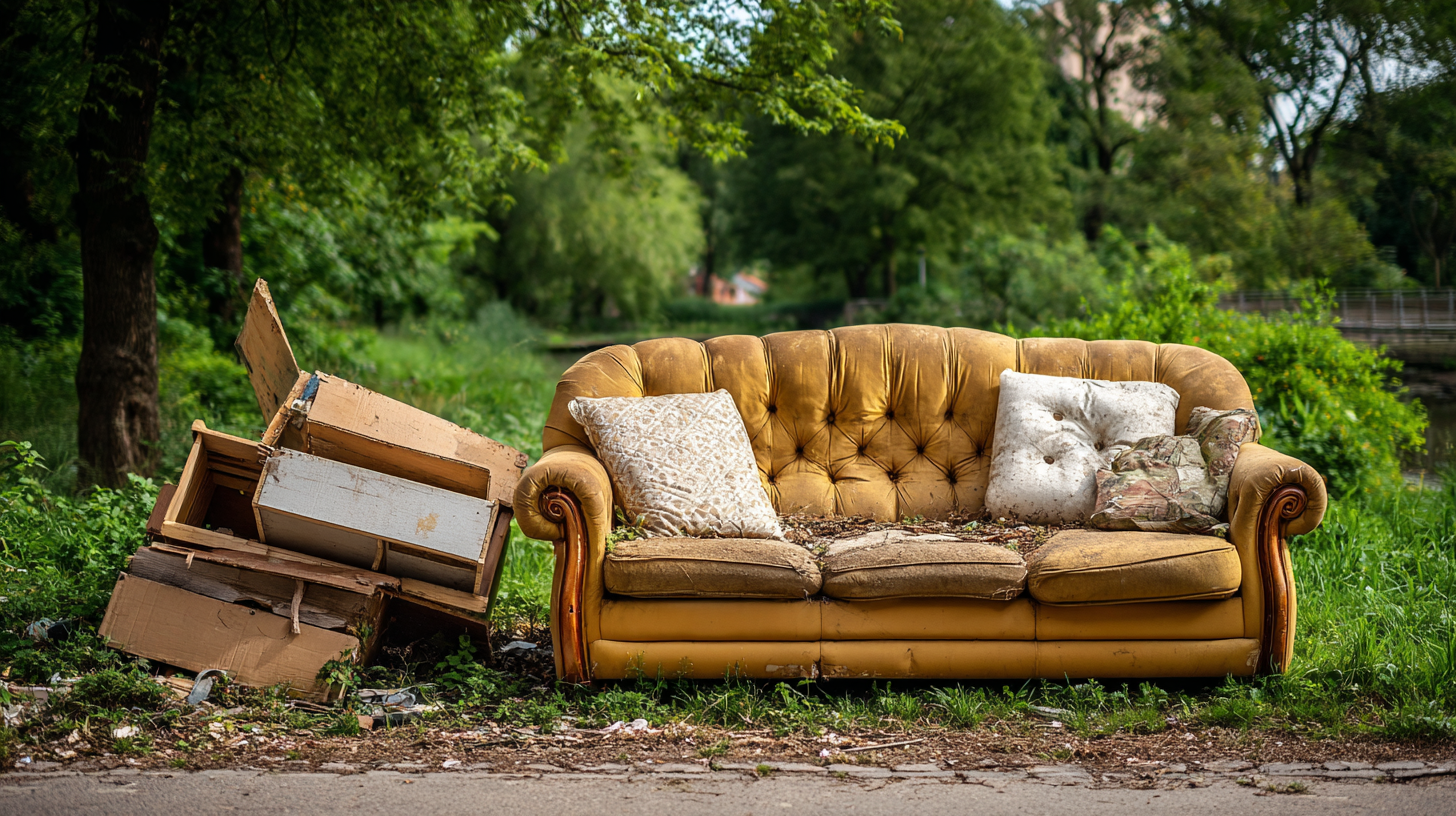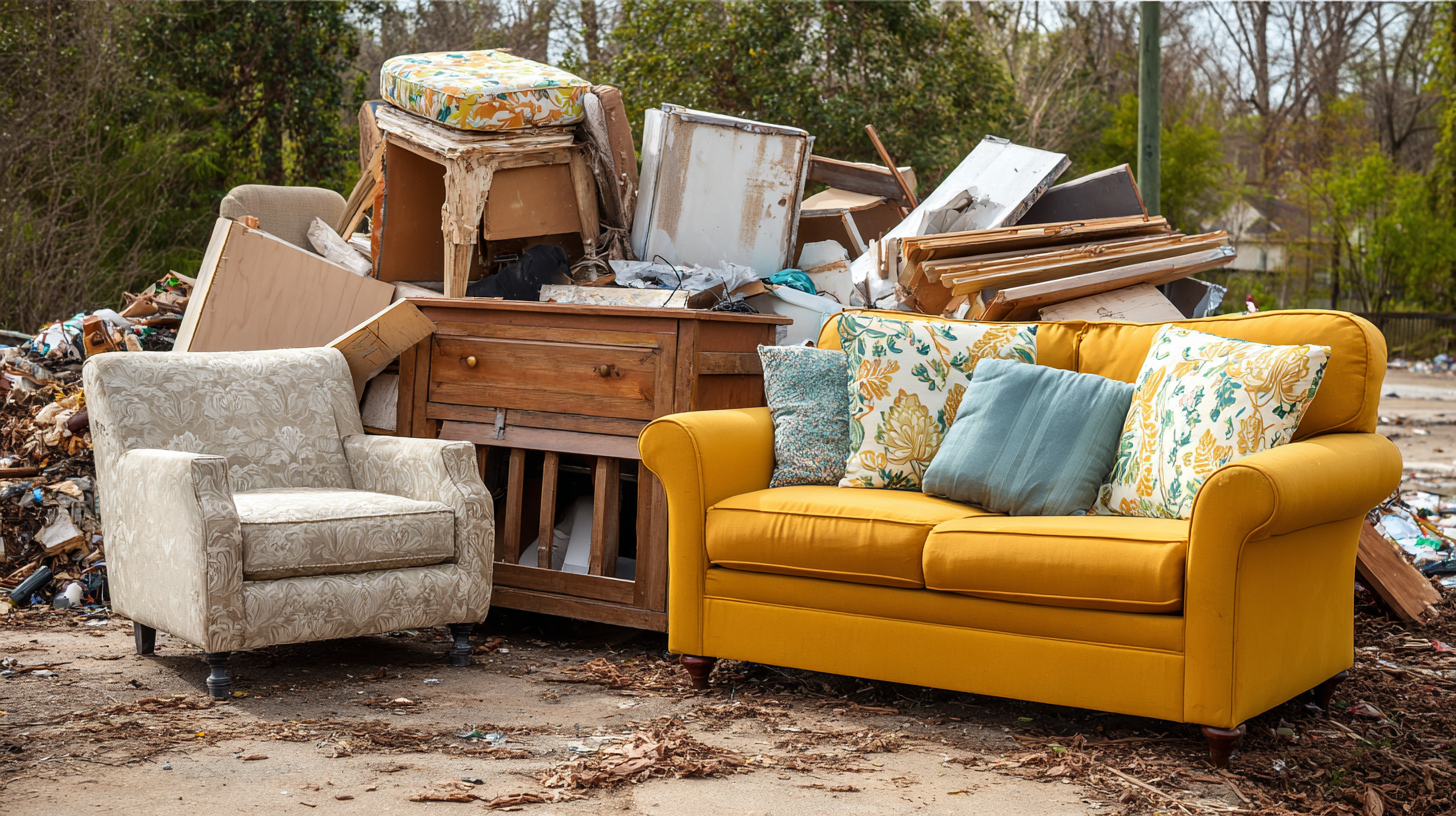Eco Friendly Furniture Waste Collection Tips for Sustainable Living
In today's rapidly evolving sustainability landscape, the concept of eco-friendly living has gained unprecedented importance, particularly in how we manage our furniture waste collection. As society becomes increasingly aware of the environmental impact of discarded furniture, it is essential to adopt practices that not only minimize waste but also promote recycling and repurposing. This article delves into practical tips for efficient furniture waste collection, exploring various methods that homeowners can implement to ensure their discarded items are dealt with responsibly. By embracing these strategies, individuals can contribute to a more sustainable lifestyle, reduce landfill contributions, and inspire others in their communities to follow suit. Through mindful furniture waste collection, we can pave the way for a greener future, where our living spaces are not only stylish but also environmentally conscious.

Understanding the Importance of Eco-Friendly Furniture in Sustainable Living
Eco-friendly furniture plays a crucial role in promoting sustainable living. By choosing furniture made from sustainable materials, such as reclaimed wood or recycled plastics, consumers can reduce their carbon footprint significantly. These materials not only minimize waste but also decrease the demand for new resources, which helps conserve forests and reduce pollution associated with manufacturing processes.
Moreover, eco-friendly furniture is often designed for longevity and durability, which contrasts with the rapidly produced, disposable options commonly found on the market. Investing in high-quality, sustainable pieces means fewer replacements over time, leading to less waste in landfills. Additionally, many eco-friendly manufacturers prioritize ethical labor practices, ensuring that their products are not only good for the environment but also promote fair treatment of workers. Embracing these values reflects a commitment to a healthier planet and a more responsible lifestyle.

Identifying Types of Furniture Waste for Responsible Disposal
When it comes to responsible disposal of furniture waste, it is crucial to identify the different types of materials commonly found in furniture. Many items are made from a mix of wood, metal, textiles, and plastics, which all require specific disposal methods. Studies show that less than 20% of waste produced globally is recycled annually, highlighting the importance of proper material segregation before disposal. For instance, solid wood furniture can often be repurposed or donated, whereas upholstered items may need to be taken to specialized recycling facilities due to their composite materials.
Additionally, various cities are enhancing waste management efforts through innovative strategies like waste clinics, which help identify local challenges and provide tailored solutions. The rise of circular public procurement contracts has also emerged as a key approach to sustainability, encouraging responsible sourcing and disposal practices within the furniture industry. This approach not only tackles furniture waste but also contributes to reducing overall environmental impact, which is increasingly vital in our effort to combat climate change. Understanding the nuances of furniture waste is essential for fostering sustainable behaviors in everyday living.
Best Practices for Collecting and Recycling Furniture Waste
Sustainable living increasingly relies on our ability to responsibly collect and recycle furniture waste. According to the Environmental Protection Agency (EPA), furniture accounts for approximately 9% of the total municipal solid waste generated in the United States, posing significant environmental challenges. Implementing best practices for furniture waste collection is essential to minimize landfill contributions and promote resource recycling.
One effective strategy for furniture recycling is donation. Charities and local organizations often accept gently used furniture, giving it a second life while supporting community needs. Additionally, consider organizing a community swap event; this not only aids in furniture reuse but also fosters community ties.
Another tip is to explore specialized recycling facilities that accept furniture materials. Many of these centers extract valuable resources, such as metal, wood, and fabric, which can be repurposed. A study conducted by the Furniture Reuse Network highlighted that up to 75% of furniture waste can be reused. Thus, by creating a systematic approach for furniture collection and recycling, individuals can significantly reduce their environmental footprint while contributing to a circular economy.
Creative Ways to Repurpose and Upcycle Old Furniture
Repurposing and upcycling old furniture is an effective way to contribute to sustainable living while also adding a unique touch to your home. According to a report by the Environmental Protection Agency (EPA), furniture accounts for about 9.7 million tons of waste in landfills each year. By creatively reusing unwanted pieces, we can significantly reduce this environmental impact. For instance, transforming an old wooden dresser into a trendy bookshelf not only gives a second life to the furniture but also minimizes the demand for new materials—a critical step in the fight against deforestation and resource depletion.
In addition to reducing waste, upcycling can be a fun and fulfilling endeavor. Utilizing techniques such as painting, reupholstering, or adding personalized hardware can breathe new life into tired pieces. The Global Circular Economy Report indicates that upcycling can decrease carbon emissions by as much as 75% compared to producing new items from raw materials. Simple projects, like converting an unused door into a dining table or creating garden planters from old chairs, are not only environmentally friendly but also foster creativity and resourcefulness. Embracing these practices supports a broader paradigm shift toward sustainable consumption and a greener planet.
Eco Friendly Furniture Waste Collection Tips for Sustainable Living - Creative Ways to Repurpose and Upcycle Old Furniture
| Item Type | Condition | Repurposing Idea | Upcycling Potential | Eco-Friendly Tip |
|---|---|---|---|---|
| Wooden Chair | Good | Outdoor Plant Stand | High | Use non-toxic paints for finish |
| Old Mattress | Worn Out | Garden Compost | Moderate | Check local disposal guidelines |
| Glass Table | Slightly Cracked | Art Project | High | Reuse glass for decorative purposes |
| Dresser | Damaged Drawers | Storage Bench | High | Opt for reclaimed wood for repairs |
| Old Bookshelves | Good | Wall Mounted Garden | Moderate | Ensure sustainability of new plants |
Resources and Programs for Eco-Friendly Furniture Disposal and Donation
When it comes to sustainable living, the disposal of eco-friendly furniture plays a crucial role. Numerous resources and programs cater to responsible furniture disposal and donation, promoting a circular economy that minimizes waste. Many local charities and nonprofit organizations accept used furniture donations, ensuring that these items can be reused by families in need. Platforms like Freecycle and Facebook Marketplace also allow individuals to give away unused furniture, connecting those who no longer need items with those who do.
In addition to traditional donation avenues, several municipalities have specific recycling programs designed for furniture waste. Many cities offer collection services for large items, ensuring that they are processed responsibly. Moreover, some companies specialize in eco-friendly disposal, either through upcycling or recycling materials from old furniture. By utilizing these resources and programs, individuals can reduce their environmental footprint and contribute to a more sustainable community while ensuring that their furniture finds a new life rather than ending up in landfills.

Related Posts
-

5 Incredible Tips to Effectively Recycle from Home for a Greener Planet
-

How to Achieve a Sustainable Future with Recycled Plastic Innovations
-

Exploring the Future of Recycled Materials at the 138th Canton Fair 2025
-

How to Transform Recycled Plastic Bottles into Sustainable Home Decor
-

The Hidden Benefits of Choosing Recycled Wood for Sustainable Living
-

Transforming Tomorrow: The Surprising Benefits of Recycled Plastic in Everyday Products
